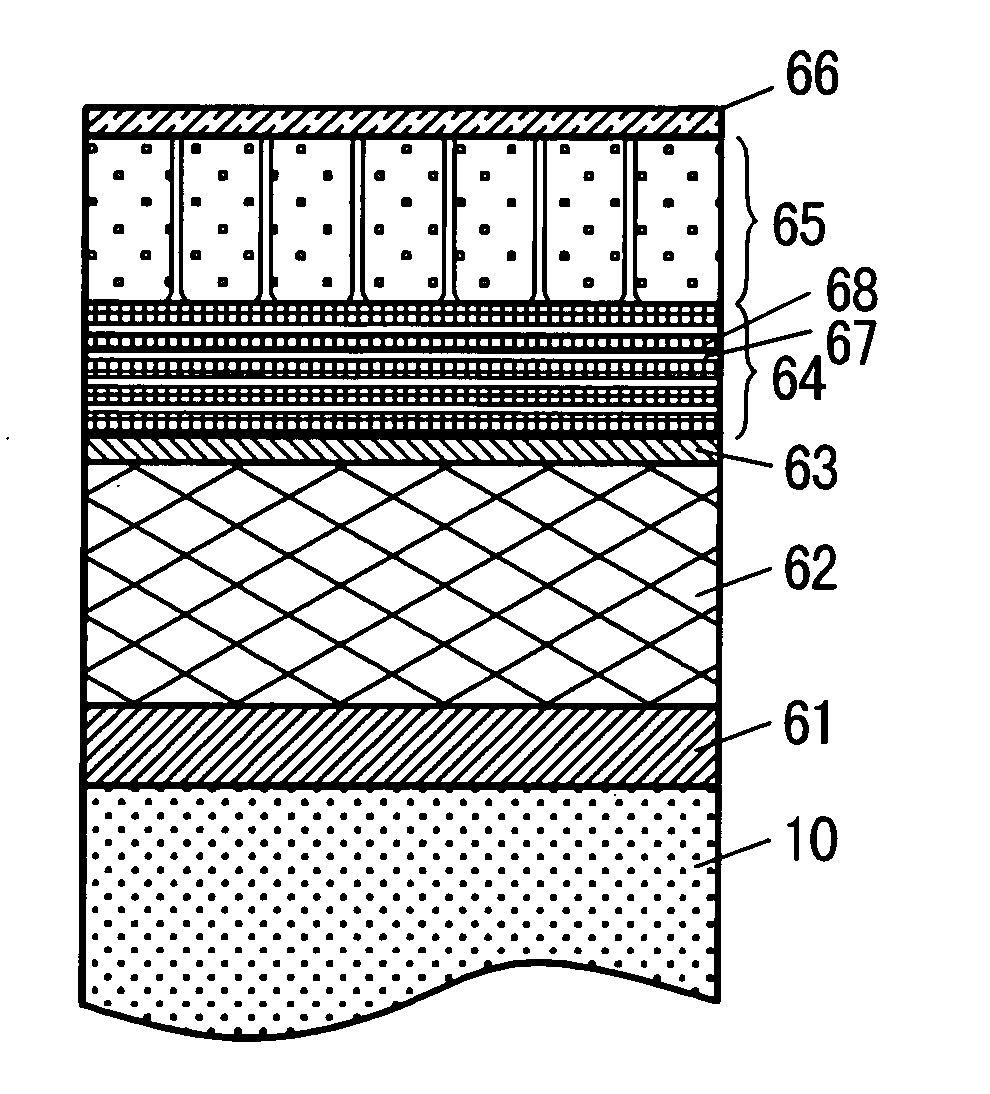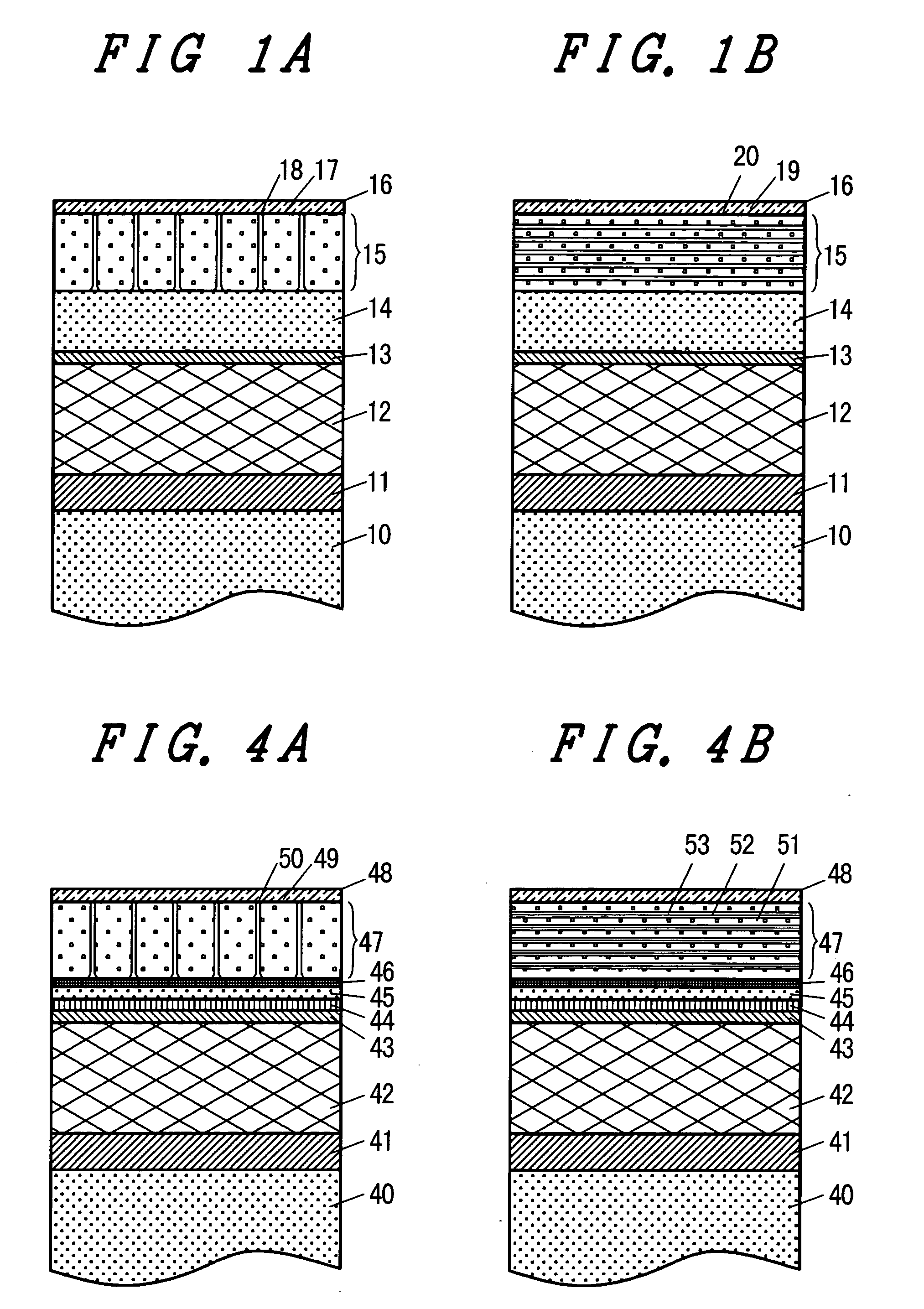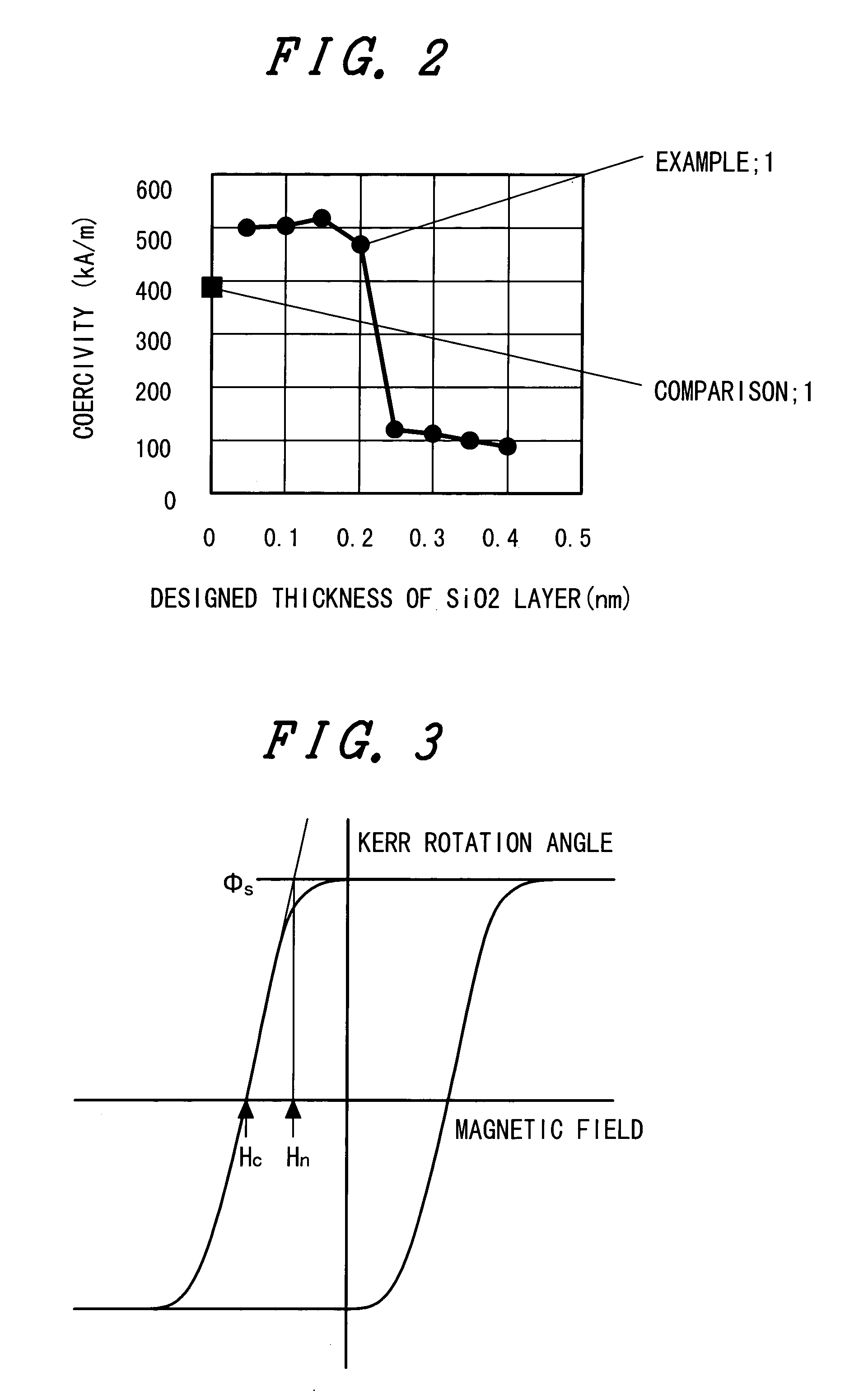Perpendicular magnetic recording medium and method of manufacturing it
a magnetic recording medium and perpendicular magnetic technology, applied in the field of perpendicular magnetic recording medium and method of manufacturing it, can solve the problems of insufficient writing performance of the recording head, loss of recorded information, and thickness of the recording layer, and achieve the effect of poor medium s/n and low thermal stability
- Summary
- Abstract
- Description
- Claims
- Application Information
AI Technical Summary
Benefits of technology
Problems solved by technology
Method used
Image
Examples
example 2
[0058] The perpendicular magnetic recording media of Example 2 were prepared with similar film structures to and the same process conditions as those of Example 1 except for the intermediate layer and the recording layer. FIG. 4A is a cross-sectional structural view showing one example of the perpendicular magnetic recording medium according to the invention. The following will discuss the procedures of preparing the intermediate layer and recording layer of this medium. A recording layer 46 was formed by cooling down the substrate until the substrate temperature, which had arisen by heating after the formation of the soft magnetic underlayer, became 100.degree. C. or lower, forming a Pd intermediate layer 43 with a thickness of 1.5 nm, an MgO intermediate layer 44 with a thickness of 1 nm, a Pd intermediate layer 45 with a thickness of 1.5 nm and an intermediate layer 46 of an alloy of Pd and 10 at % of B with a thickness of 3 nm in order, and then repeatedly forming a Pd film, a C...
example 3
[0064] The perpendicular magnetic recording media of Example 3 were prepared with similar film structures to and the same process conditions as those of Example 1 except for the intermediate layer and the recording layer.
[0065] FIG. 6A is a cross-sectional structural view showing one example of the perpendicular magnetic recording medium according to the invention. The following will discuss the procedures of preparing the intermediate layer and recording layer of this medium.
[0066] After the substrate was cooled down until the substrate temperature, which had arisen by heating after the formation of the soft magnetic underlayer, became 100.degree. C. or lower, a Ta intermediate layer 63 with a thickness of 1 nm and an intermediate layer 64 with a thickness of 20 nm comprised of a mixture of Ru and Si oxide were formed, on which a recording layer 65 with a thickness of 14 nm made of an alloy of Co, 13 at % of Cr and 14 at % of Pt and an Si oxide and further a carbon protective layer...
example 4
[0076] The perpendicular magnetic recording media of this example were prepared with similar film structures to and the same process conditions as those of Example 1, except that the thickness of the recording layer was set to 16 nm and the composition of the Co--Cr--Pt alloy film used in the recording layer was Co, 17 at % of Cr and 14 at % of Pt. In this example, a sample was prepared by fixing the designed thickness of the SiO.sub.2 film to 0.1 nm and changing the amount of SiO.sub.2 to be mixed in the Co--Cr--Pt alloy film of the recording layer by varying the designed thickness of the Co--Cr--Pt alloy film in the alternate formation.
[0077] As a sample to be compared with Example 4, perpendicular magnetic recording media which differ from Example 4 only in the method of forming the recording layer and are the same in the other film structures and process conditions were prepared as Comparative Example 4. The recording layer of Comparative Example 4 was formed by RF sputtering us...
PUM
 Login to View More
Login to View More Abstract
Description
Claims
Application Information
 Login to View More
Login to View More - R&D
- Intellectual Property
- Life Sciences
- Materials
- Tech Scout
- Unparalleled Data Quality
- Higher Quality Content
- 60% Fewer Hallucinations
Browse by: Latest US Patents, China's latest patents, Technical Efficacy Thesaurus, Application Domain, Technology Topic, Popular Technical Reports.
© 2025 PatSnap. All rights reserved.Legal|Privacy policy|Modern Slavery Act Transparency Statement|Sitemap|About US| Contact US: help@patsnap.com



